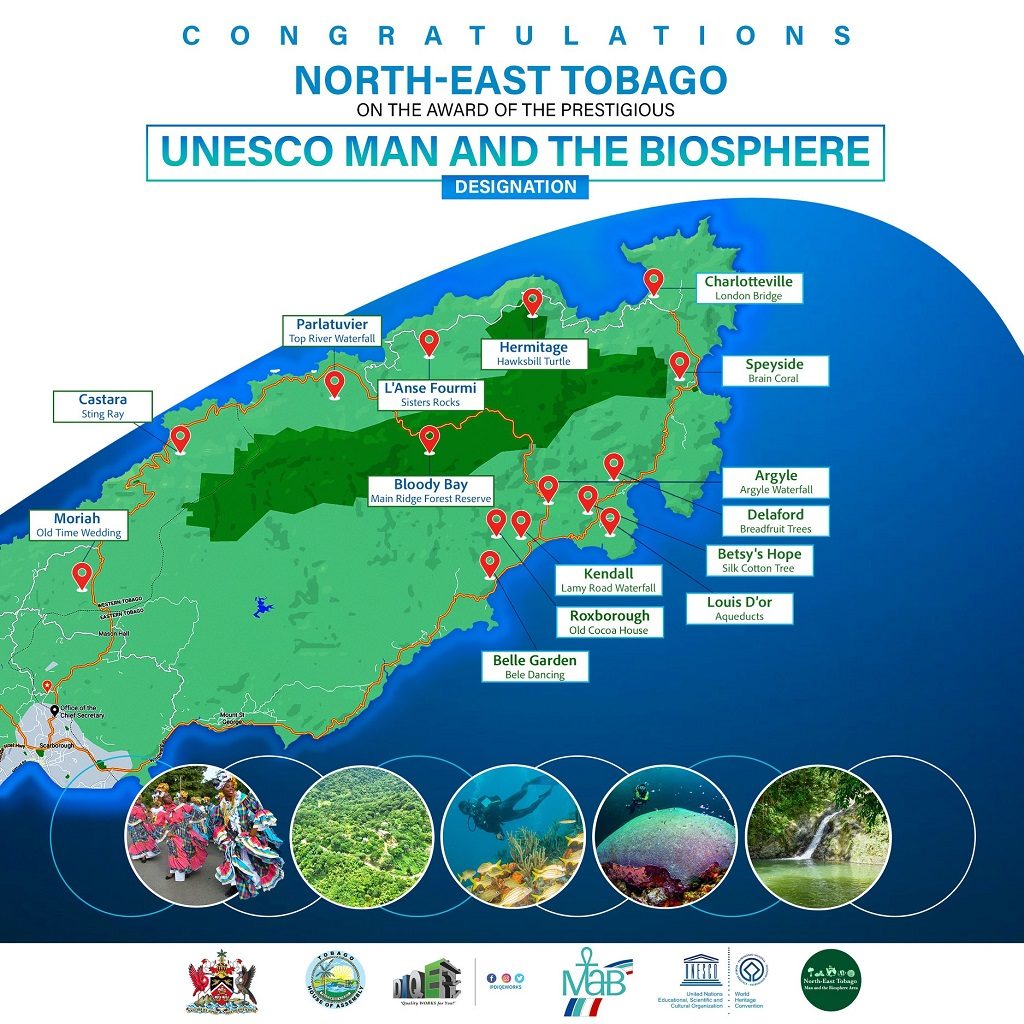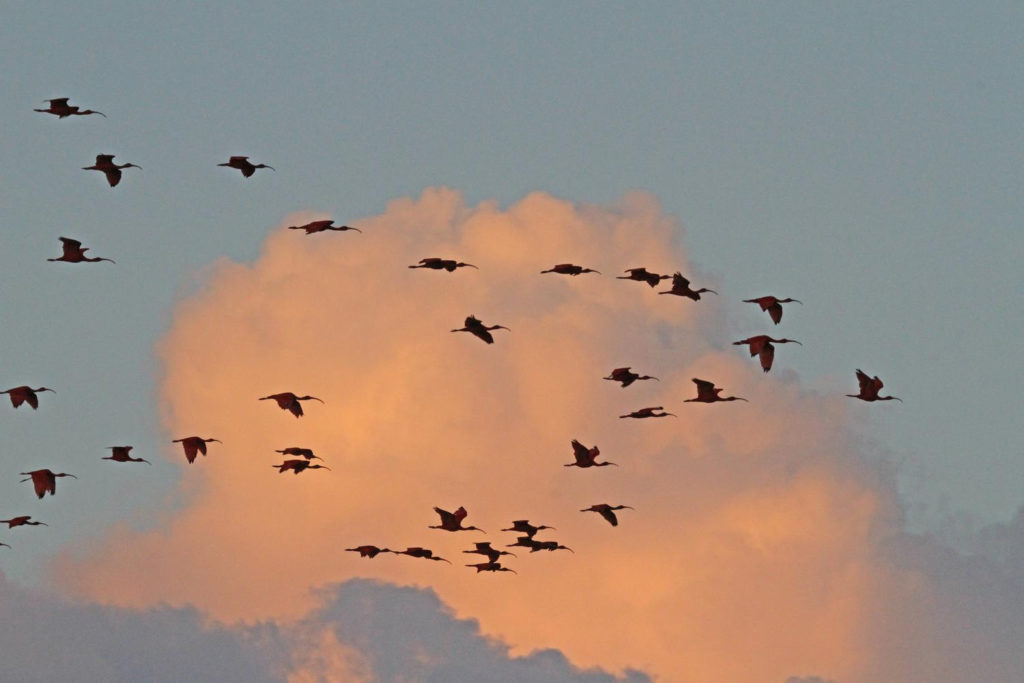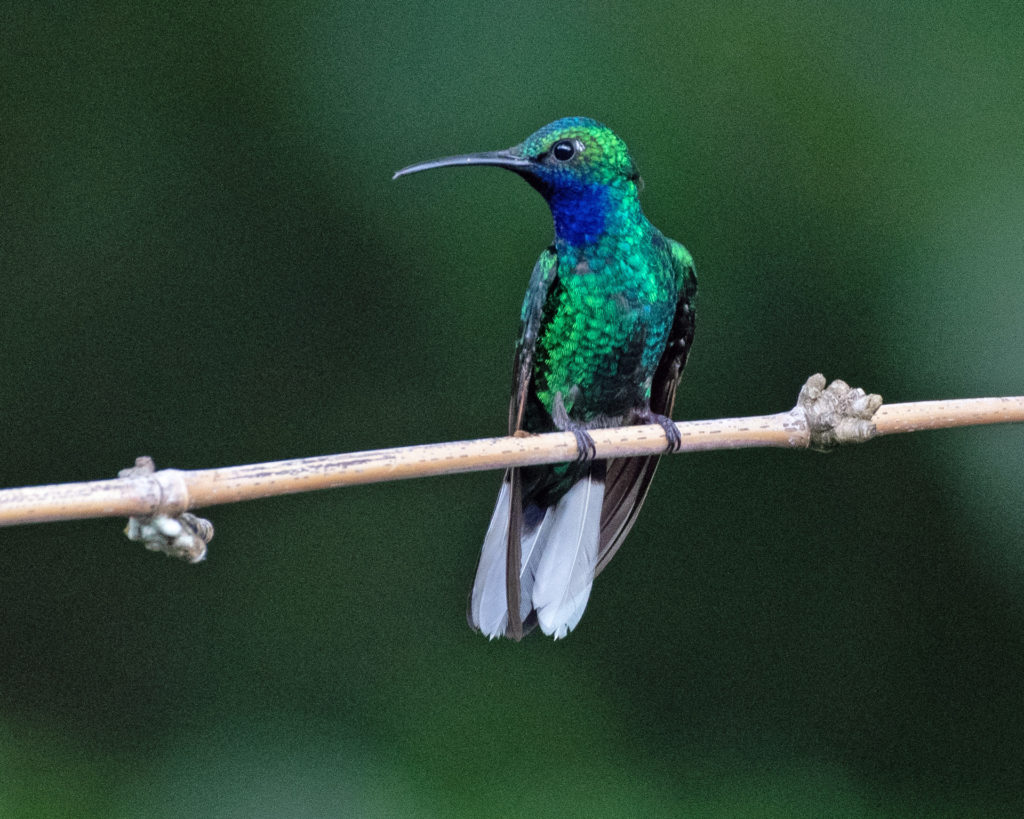Northeast Tobago Earns Valuable ‘Man and the Biosphere’ Recognition
Last October, as Trinidad and Tobago were in the midst of a 16-month COVID-19 lockdown, UNESCO declared a large swath of Northeast Tobago a “Man and the Biosphere” reserve, a prestigious designation that is expected to help the tourism sector recover and continue to develop sustainably.
“By joining the World Network of Biosphere Reserves, the community aims to revitalize cultural and spiritual bonds between people and nature and boost the preservation of this fragile and remarkable human and natural landscape,” UNESCO wrote in its declaration.
One of now 714 UNESCO Nature Reserves, among Caribbean sites only Guadalupe Island’s reserve is larger.

Fifteen communities and 10,000 people live inside the massive terrestrial and marine reserve, which envisions them working sustainably to develop Tobago while preserving its biodiversity.
Of course nature tourists, and especially birders, knew all about Trinidad and Tobago’s natural wonders well before the UNESCO biosphere designation. Caligo Ventures guests have been coming to Trinidad and Tobago for decades, and we’ve long worked with trusted local partners to sustainably explore areas inside the new biosphere boundaries.

Scarlet Ibis and pink Caribbean sunset.
Both our 10-day Classic and 12-day Ultimate 2-Island tours visit the Main Ridge Forest Reserve, one of the most compelling natural features cited in the UNESCO designation. The marine portion of the UNESCO nature reserve also encircles Little Tobago, where our guests discover awesome pelagics like the Magnificent Frigatebird, Red-billed Tropicbird and many others.

Forming the spine at the heart of Tobago, Main Ridge is famously the oldest protected tropical rainforest in the world, older even than the United States. It is home to 210 species of birds, according to UNESCO, “the most outstanding being the bird species Campylopterus ensipennis – the White-tailed Sabrewing Hummingbird – that is both rare and endemic to Tobago.”

As other Caribbean Islands saw forests clear cut for sugarcane plantations during the colonial period, in 1776, Main Ridge was set aside “for the purpose of attracting frequent showers of rain upon which the fertility of lands in these climates doth entirely depend.”
It was the culmination of an 11-year lobbying campaign by an enlightened member of Parliament, Soame Jenyns, who was influenced by the work of English scientist Stephen Hales linking rainfall and forests.
The protection was remarkable, but sadly an outlier. Only 10 percent of Caribbean forests remain intact, noted UNESCO in its biosphere reserve designation.
Although Trinidad and Tobago is one of the wealthiest nations in the Caribbean, its tourism sector is much smaller and less developed than its neighbors.
The Caribbean is often called “the most tourism dependent region in the world,” with 14 percent of collective GDP generated by visitors. By contrast, just 2 to 3 percent of Trinidad and Tobago’s economy comes from tourism, while 40 percent of GDP and 80 percent of exports are tied to vast fossil fuel deposits, including oil and natural gas.
The hope and the expectation is that the UNESCO nature reserve designation will help focus more investment not just in sustainable tourism, but in diversified industries that are compatible with protecting its biodiversity.
“Some of the expected benefits to Trinidad and Tobago include the generation of sustainable green and blue economic activities beyond tourism, including fisheries, agriculture, cultural heritage promotion, scientific research and education, among others,” according to the UNESCO nature reserve declaration.
Below, longtime guide Jason Radix speaks about the Main Ridge Forest Reserve, and the birds we expect to see there.

